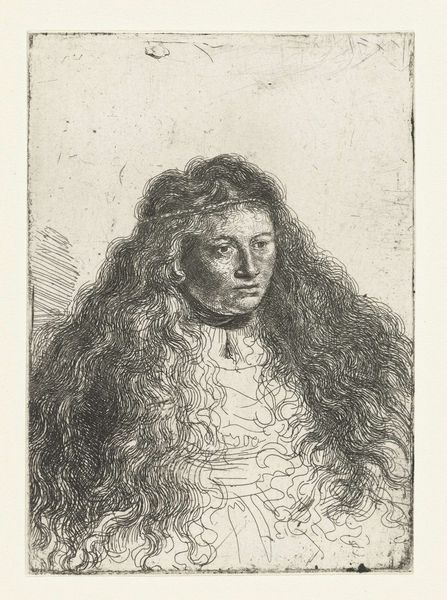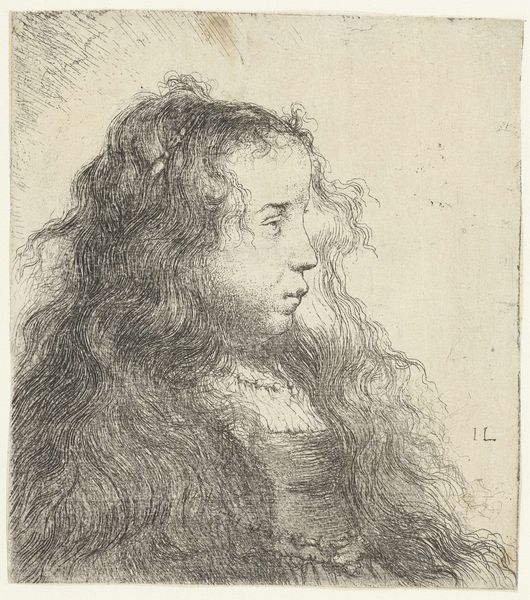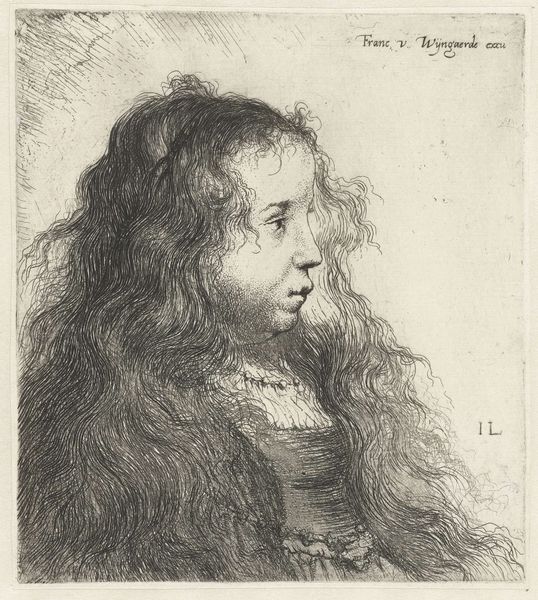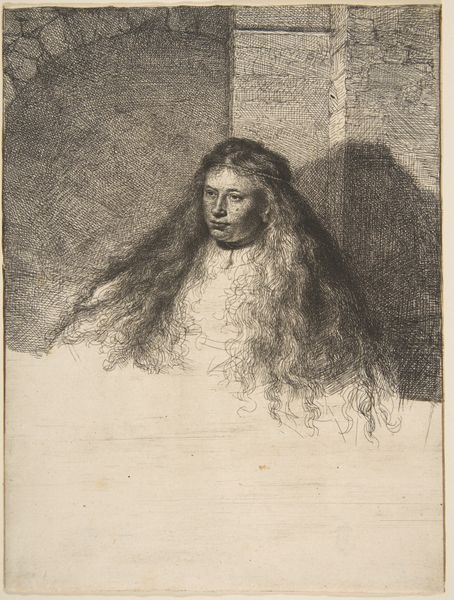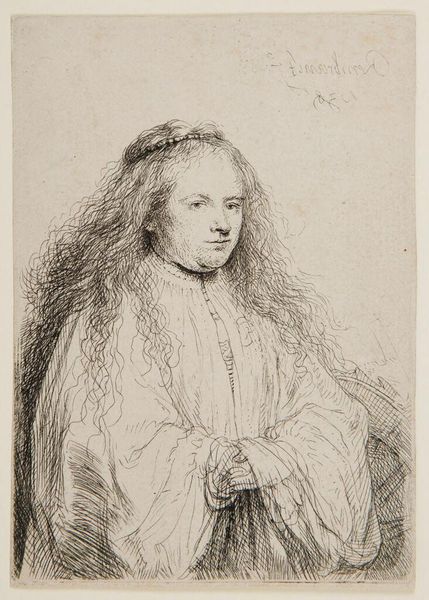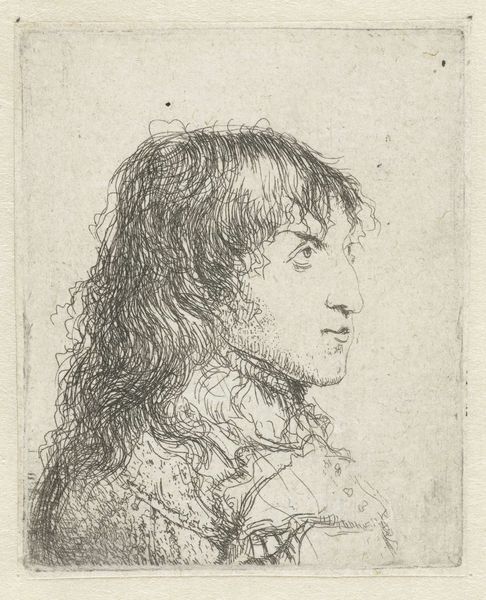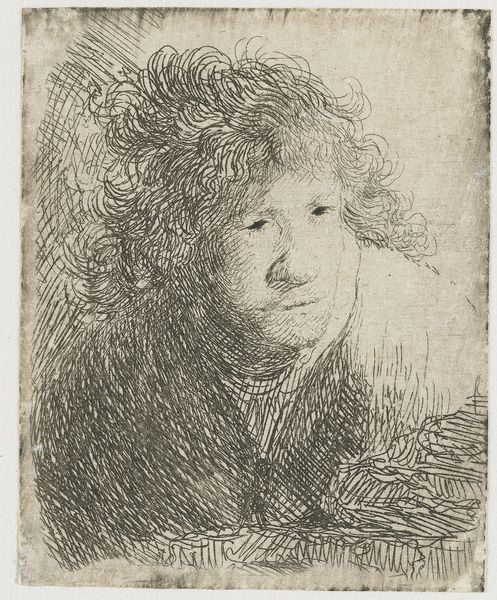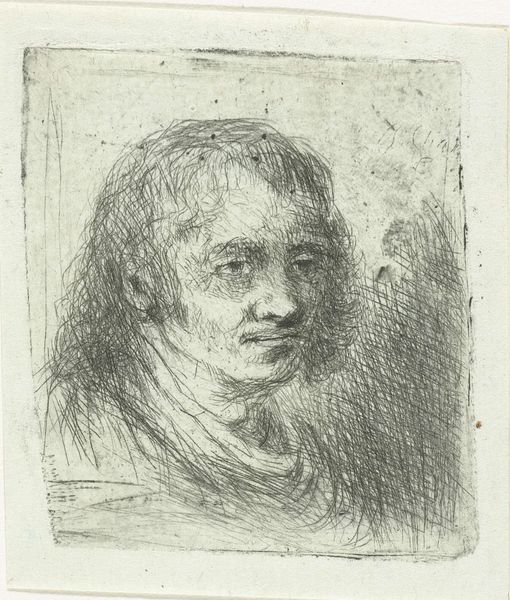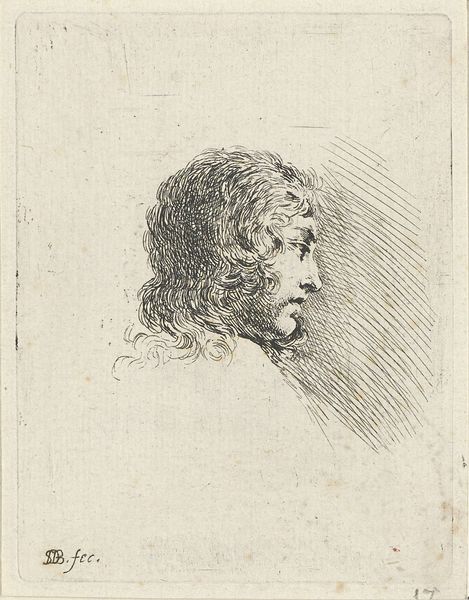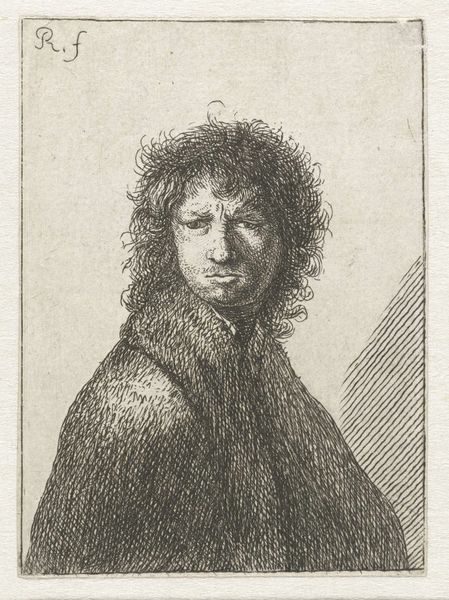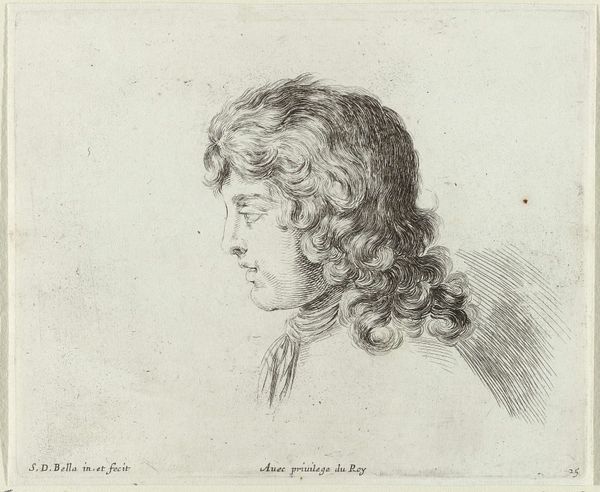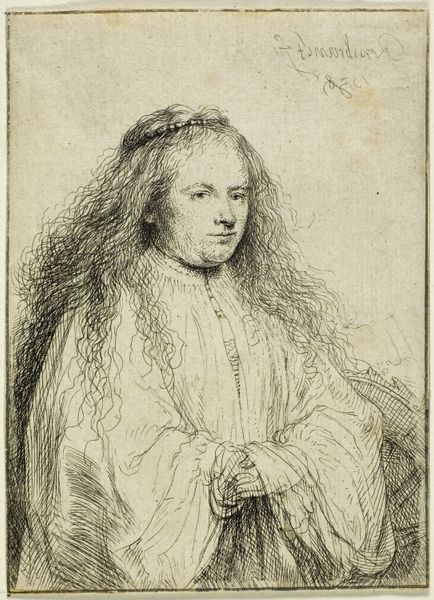
drawing, etching
#
portrait
#
pencil drawn
#
drawing
#
baroque
#
dutch-golden-age
#
etching
#
pencil sketch
#
pencil drawing
#
sketch
#
portrait drawing
Dimensions: 13 x 9 cm
Copyright: Public domain
Editor: Here we have Rembrandt van Rijn’s "Study of Jewish Bride," created with etching. I’m immediately struck by the intricate linework, almost a frenzy of detail, used to depict her flowing hair. It's quite intimate, like a stolen glance. How do you interpret this work, especially considering Rembrandt's socio-cultural environment? Curator: This piece offers a glimpse into the complexities of representation and identity within 17th-century Dutch society. Consider the title itself – "Jewish Bride." It’s not simply a portrait, but an engagement with the ‘other,’ viewed through a Christian, Western lens. Rembrandt's portrayal, using the etching technique to capture light and shadow, elevates her image. But to what extent does this aestheticization challenge or reinforce existing power dynamics and societal expectations of Jewish women? Does the "study" format suggest objectification? Editor: That’s a perspective I hadn’t considered. I was focused on the artistry, but you’re right, the title implies a certain categorization. What can we read into her expression? Curator: Her gaze, averted and contemplative, invites speculation. Is she a subject of admiration, or an exotic spectacle for the dominant culture? Is there a vulnerability present, reflecting her position within a society rife with religious and ethnic tensions? Think about how Rembrandt utilizes light—his signature chiaroscuro—not just as a visual technique, but perhaps to highlight and simultaneously obscure aspects of her identity. It speaks to both presence and erasure, doesn't it? Editor: Absolutely. The more you unpack it, the more questions arise about representation and cultural appropriation in art. Thank you, this changed how I will look at portraits going forward! Curator: And that’s precisely the point – to understand art as a dynamic participant within broader conversations around identity, power, and representation. It's through that lens we can begin to assess and challenge art's role in perpetuating or dismantling social narratives.
Comments
No comments
Be the first to comment and join the conversation on the ultimate creative platform.
